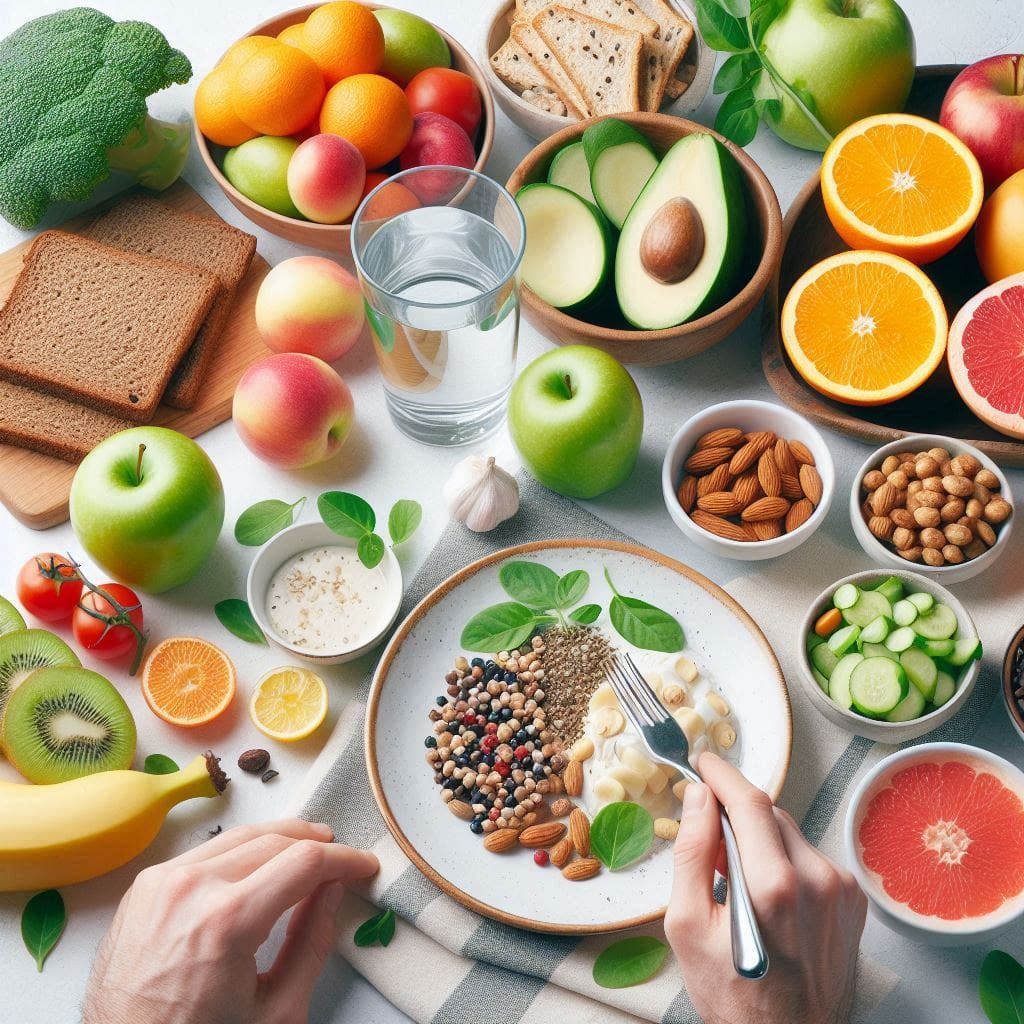
Eating clean doesn’t mean going on a restrictive diet or cutting out all your favorite foods overnight. It’s about choosing whole, minimally processed foods more often — and doing so in a way that feels doable and sustainable. If you’re ready to eat healthier but feel overwhelmed by all the conflicting advice out there, don’t worry. This guide breaks it down step by step, so you can ease into clean eating without stress or perfectionism.
1. Understand What Clean Eating Really Means
Clean eating isn’t a strict set of rules — it’s a flexible approach to eating more whole, natural foods and fewer processed ones. That means:
- Choosing foods in their most natural state (like fruits, veggies, whole grains, nuts, and seeds)
- Avoiding heavily processed items high in added sugars, refined carbs, and artificial ingredients
- Cooking more at home and reading labels when shopping
It’s about progress, not perfection.
2. Start with One Small Change at a Time
Trying to change your entire diet overnight is overwhelming. Instead, pick one simple habit to focus on each week. Some ideas:
- Swap sugary cereals for oatmeal or eggs
- Add a veggie to every meal
- Replace soda with infused water or herbal tea
Once that habit feels easy, add another.
3. Shop the Perimeter of the Grocery Store
The outer edges of most grocery stores are where you’ll find the freshest foods: produce, dairy, meat, and whole grains. The middle aisles tend to be filled with boxed, canned, or frozen processed foods.
Stick to the perimeter when possible, and aim to fill your cart with real, colorful, whole ingredients.
4. Learn to Read Food Labels
When you do buy packaged foods, look for short ingredient lists with items you recognize. Red flags to avoid:
- Added sugars (look for anything ending in -ose, syrup, or malt)
- Artificial colors or flavors
- Hydrogenated oils or trans fats
A good rule of thumb: if you can’t pronounce it or wouldn’t cook with it at home, skip it.
you may also like https://thrievly.com/10-daily-habits-that-boost-your-health-naturally/
5. Cook at Home More Often
You don’t need to be a gourmet chef. Even simple home-cooked meals are often healthier than takeout or restaurant food. Cooking at home lets you control ingredients, portions, and added sugars or fats.
Start with easy recipes like stir-fries, soups, or sheet-pan meals. Make extra and save leftovers to save time later in the week.
6. Stay Hydrated
Clean eating isn’t just about food — what you drink matters too. Swap sugary drinks and sodas for water, herbal tea, or fruit-infused water.
Proper hydration helps digestion, boosts energy, and supports your overall health.
7. Don’t Aim for Perfection — Aim for Balance
Clean eating should feel like a lifestyle, not a punishment. It’s okay to enjoy dessert or eat out occasionally. The goal is to build habits that nourish your body and still let you enjoy food.
If 80–90% of your meals are clean, the occasional indulgence won’t set you back.
8. Listen to Your Body
Pay attention to how different foods make you feel. Do you feel energized or sluggish after certain meals? Do some foods upset your stomach or help you stay full longer?
Use that feedback to guide your choices instead of relying solely on external rules or trends.
9.Go for the green
Leafy green vegetables like spinach, kale and arugula are easy and nutritious ingredients that can be added to almost any meal.
Adding a mixed green salad to your meal, incorporating sautéed spinach into an omelet or tossing fresh kale into your favorite smoothie are easy ways to eat more healthy produce.
Greens — especially dark, leafy greens like kale — are packed with vitamins, minerals and antioxidants that help your body thrive.
Try experimenting with different types of greens to narrow down your favorites.
you may also like https://thrievly.com/recapturing-the-lost-art-of-boredom/
10.Ditch Refined Carbs
Filling up on white rice, bread and pasta won’t do you any favors when it comes to health.
This is because these foods lack the vitamins, minerals, fat, protein and fiber that your body needs to function.
Plus, a high intake of refined carbohydrates has been associated with an increased risk of developing health issues like obesity and diabetes (3Trusted Source, 4Trusted Source, 5Trusted Source).
Swap refined grains for whole, fiber-rich grains like oats, barley, brown rice and farro for cleaner, more nutrient-dense carbohydrate options.
8. Choose Nutrient-Dense Foods
Foods that are considered “nutrient-dense” contain an impressive amount of nutrients but are relatively low in calories. They’re perfect for those looking to shed pounds.
Nutrient-dense foods include broccoli, berries, eggs, red bell peppers, seeds, wild-caught salmon and sweet potatoes.
On the other hand, foods that are considered nutrient-poor, like candy and fast food, are packed with calories yet contain few nutrients.
Choosing meals and snacks that are loaded with nutrient-dense ingredients is a smart and delicious way to get healthier.
Conclusion
Clean eating doesn’t have to be complicated. Start small, stay consistent, and give yourself grace as you make changes. Over time, those little shifts will add up to better energy, digestion, mood, and overall health — without ever feeling overwhelmed.
Remember: it’s not about being perfect. It’s about being intentional and kind to your body, one meal at a time.




Для успешной работы потребуется корректная xrumer установка, чтобы избежать ошибок.